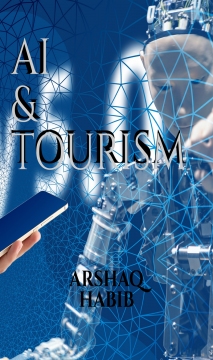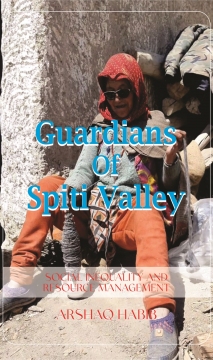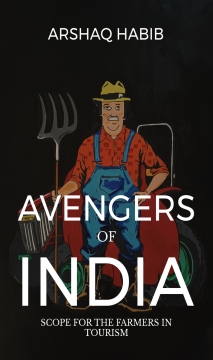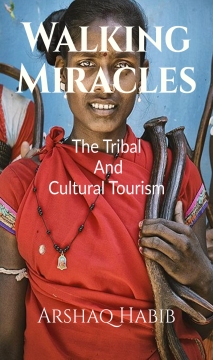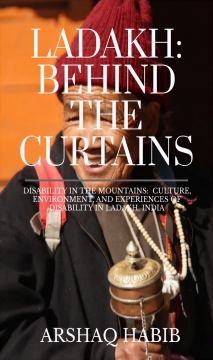
- Discover books
- For Writers
-
For Writers
-
Indie Author Championship
-
Challenges
Writing Contests
- Get Started

"It was a wonderful experience interacting with you and appreciate the way you have planned and executed the whole publication process within the agreed timelines.”
Subrat SaurabhAuthor of Kuch Woh Pal -
Arshaq Habib
Research ScholarMr. Arshaq Habib is a Research Scholar at Mangalore University. He has completed is MBA (Tourism and Travel Management) and is currently pursuing his PhD in Mangalore University.He is a travel expert and an adventure specialist.As a student of the management, I have always been interested in customer’s perceptions, decision making process, factors driving and impacting the field of management and thereby a specific business sector. After completing my MBA in the tourism management, I started my internship as Manager at one of the prestigious hotels in Coorg.Read More...
Mr. Arshaq Habib is a Research Scholar at Mangalore University. He has completed is MBA (Tourism and Travel Management) and is currently pursuing his PhD in Mangalore University.He is a travel expert and an adventure specialist.As a student of the management, I have always been interested in customer’s perceptions, decision making process, factors driving and impacting the field of management and thereby a specific business sector. After completing my MBA in the tourism management, I started my internship as Manager at one of the prestigious hotels in Coorg.
Read Less...Crop your profile image

AI and Tourism
Books by Arshaq Habib
Artificial intelligence is particularly relevant to travel and tourism for several reasons. Tourists need to make a series of decisions about future trips, for example, choosing a destination, transport, accommodation, and activities, among other things. These decisions will have a significant impact on tourists’ satisfaction with their trip. However, the range of destinations, transport, accommodation, and activ- ities currently available presents an al
Artificial intelligence is particularly relevant to travel and tourism for several reasons. Tourists need to make a series of decisions about future trips, for example, choosing a destination, transport, accommodation, and activities, among other things. These decisions will have a significant impact on tourists’ satisfaction with their trip. However, the range of destinations, transport, accommodation, and activ- ities currently available presents an almost infinite array of options necessitating assistance. Tourism organizations and agents face a similar challenge when trying to find the best match between customers and travel packages tailored to their needs. Organizations have an almost infinite supply of potential customers.
LADAKH: FADING LEGACY
Books by Arshaq Habib
In the past, economy of Ladakh was mainly dependent on the agricultural sector, government jobs and armed forces but now the tourism sector has emerged as a main contributing agent to the economy. The impact-oriented studies related to tourism for Ladakh are limited to social, cultural, and geographical aspects, lacking a focus on impact of tourism on economic development of Ladakh. Hence, the present study provides an empirical analysis of the impact of touri
In the past, economy of Ladakh was mainly dependent on the agricultural sector, government jobs and armed forces but now the tourism sector has emerged as a main contributing agent to the economy. The impact-oriented studies related to tourism for Ladakh are limited to social, cultural, and geographical aspects, lacking a focus on impact of tourism on economic development of Ladakh. Hence, the present study provides an empirical analysis of the impact of tourism on the economy of Ladakh. Consequently, the study provides effective suggestions to policymakers for development of sustainable tourism that boosts economic development in Ladakh.
Guardians of Spiti Valley
Books by Arshaq Habib
Partly due to its high and a ridgeo graphical conditions, Spiti is relatively isolated.Most tourists as well as anthropological researchers visiting the region choose to visit the neighboring region of Ladakh, which has similar cultural and geographical environments but is connected by an airport facility and better road infrastructure-and thus astronger tourist economy. The road connecting Spiti to the nearest Indian town of Manali, much of which is unpave
Partly due to its high and a ridgeo graphical conditions, Spiti is relatively isolated.Most tourists as well as anthropological researchers visiting the region choose to visit the neighboring region of Ladakh, which has similar cultural and geographical environments but is connected by an airport facility and better road infrastructure-and thus astronger tourist economy. The road connecting Spiti to the nearest Indian town of Manali, much of which is unpaved, is normally closed from November to April every year due to snow.
AVENGERS OF INDIA
Books by Arshaq Habib
Agro-tourism is a way of sustainable tourist development and multi-activity in rural areas through which the visitor has the opportunity to get aware with agricultural areas, agricultural occupations, local products, traditional food and the daily life of the rural people, as well as the cultural elements and traditions. Moreover, this activity brings visitors closer to nature and rural activities in which they can participate, be entertained and feel the plea
Agro-tourism is a way of sustainable tourist development and multi-activity in rural areas through which the visitor has the opportunity to get aware with agricultural areas, agricultural occupations, local products, traditional food and the daily life of the rural people, as well as the cultural elements and traditions. Moreover, this activity brings visitors closer to nature and rural activities in which they can participate, be entertained and feel the pleasure of touring. Agro-Tourism is helpful to the both farmers and urban peoples. It has provided an additional income source to the farmers and employment opportunity to the family members and rural youth. But, there are some problems in the process of the development of such centres.
Walking Miracles
Books by Arshaq Habib
Whether you are going for a trekking tour in the Indian Himalayan region or beach holiday in Andaman, Goa or Kerala you will surely get a glimpse of some of the tribes dwelling in the region. In contrast to leisurescapers, the explorers who travel to seek the indigenous colours of India go deep into the Indian tribal chapters to capture their lifestyle and art.Their lifestyle is completely different from the rest of the world. With an obscure history they are
Whether you are going for a trekking tour in the Indian Himalayan region or beach holiday in Andaman, Goa or Kerala you will surely get a glimpse of some of the tribes dwelling in the region. In contrast to leisurescapers, the explorers who travel to seek the indigenous colours of India go deep into the Indian tribal chapters to capture their lifestyle and art.Their lifestyle is completely different from the rest of the world. With an obscure history they are still competing to get along with the modern trend. Their livelihood is mainly dependent on agriculture and handicrafts but the tribes of India still display a wide spectrum of “another India” you hardly know about. One cannot, however, get the complete picture about the whole tribe just by studying or getting close to one particular tribe as each one of them has its own respective culture – food, festival, dance, music, religion and language. This book explains the blend of cultural tourism with tribal communities in india.
LADAKH: BEHIND THE CURTAINS
Books by Arshaq Habib
Ladakh is a high-altitude desert in the Indian state of Jammu and Kashmir. Covering an area of 40,000 square miles, Tourist arrivals grew rapidly from a few hundred in the initial years to around 15,000 by the mid-1980s. Foreign tourist arrivals have stabilized at about this level.
The last 15 years have seen a vigorous program of development in Ladakh, which has brought changes in education, health care, agriculture, energy, and transportation. Tourism is
Ladakh is a high-altitude desert in the Indian state of Jammu and Kashmir. Covering an area of 40,000 square miles, Tourist arrivals grew rapidly from a few hundred in the initial years to around 15,000 by the mid-1980s. Foreign tourist arrivals have stabilized at about this level.
The last 15 years have seen a vigorous program of development in Ladakh, which has brought changes in education, health care, agriculture, energy, and transportation. Tourism is concentrated in the predominantly Buddhist settlements of the Indus Valley, of which the ancient capital and trading center of Leh (population 8,000) is the hub. Many areas of Ladakh are still off limits to foreign visitors due to their proximity to the Chinese and Pakistani borders. A large part of southern Ladakh is accessible only by foot.Tourism, a major contributor to Ladakh's cash economy, has brought clear economic benefits to the minority involved in this trade. The tourism economy is centered around Leh, and very little of the economic benefit of tourism accrues to the more than 90 percent of Ladakhis who live outside of this area. Within Leh the handful of Ladakhis who own large hotels benefit disproportionately. Much of the money spent in Leh goes to tour operators and merchants who come to Ladakh just for the tourist season. Those who do live outside of Leh benefit somewhat from trekkers. They frequently rent out their pack animals and occasionally lodge trekkers not traveling with prearranged tour groups.
Lockdown Destruction
Books by Arshaq Habib
India draws millions of tourists every year as the ‘AtithiDevoBhava’ conviction that means Guest is God exemplifies India’s history of providing its hospitality services at its finest by accommodating the guests. That would be the reason why the industry contributed around 9% of the India’s GDP. That would be the
India draws millions of tourists every year as the ‘AtithiDevoBhava’ conviction that means Guest is God exemplifies India’s history of providing its hospitality services at its finest by accommodating the guests. That would be the reason why the industry contributed around 9% of the India’s GDP. That would be the reason why the industry contributed about 9% of India’s GDP. In the current situation where Covid-19 was announced as a pandemic by the World Health Organization, the Government of India announced a complete lockdown of the nation that had a strong impact on the economy, mainly the tourism and hospitality industry, which is unable to open even after the lockdown. This research was therefore undertaken in order to understand India 's situation in this pandemic, examine the country's effect on tourism and hospitality industry, and recognize the role of food service sectors in Bangalore.
Women with Infinity Stones
Books by Arshaq Habib
Women Entrepreneurs may be defined as the women or a group of women who initiate, organize and operate a business enterprise. The Government of India has defined women entrepreneurs as ―an enterprise owned and controlled by women having a minimum financial interest of 51 per cent of the capital and giving at least 51 per cent of the employment generated in the enterprise to women‖. Women entrepreneurs engaged in business due to push and pull factors which
Women Entrepreneurs may be defined as the women or a group of women who initiate, organize and operate a business enterprise. The Government of India has defined women entrepreneurs as ―an enterprise owned and controlled by women having a minimum financial interest of 51 per cent of the capital and giving at least 51 per cent of the employment generated in the enterprise to women‖. Women entrepreneurs engaged in business due to push and pull factors which encourage women to have an independent occupation and stands on their on legs. A sense towards independent decision-making on their life and career is the motivational factor behind this urge. Saddled with household chores and domestic responsibilities women want to get independence. Under the influence of these factors the women entrepreneurs choose a profession as a challenge and as an urge to do something new. Such a situation is described as pull factors. While in push factors women engaged in business activities due to family compulsion and the responsibility is thrust upon them.
Viral Mystification
Books by Arshaq Habib
The Internet has brought about a lot of changes in hotel industry, specifically on the marketing section. It has assisted the firms to collaborate and coordinate different activities and also reach the customers in different corners of the globe. Social media marketing is an important part of internet that helps the firm to stay connected to the customers. It comprises of aspects such as online advertising; publishing of credible information for customers; com
The Internet has brought about a lot of changes in hotel industry, specifically on the marketing section. It has assisted the firms to collaborate and coordinate different activities and also reach the customers in different corners of the globe. Social media marketing is an important part of internet that helps the firm to stay connected to the customers. It comprises of aspects such as online advertising; publishing of credible information for customers; communicating with the customers through discussion forums, blogs, social networks and much more. Thus, social media marketing has a great deal of impact on the hotel industry itself. It helps to increase the customer base of the hotels by understanding their concerns, responding to their queries and also providing better services based on the opinions shared. Being an avid traveller myself, there have been instances wherein I have experienced manipulations through social media. However, considering my educational background and my work experience, I was eager to learn more about the social media marketing and its impact on hospitality industry. My experiences with tourism and its influence on internet in transforming the tourism industry is what influenced me to write this book.
This is how they see it
Books by Arshaq Habib
It is noted that tourists’ who are interested in taking tourism services through online medium, can use two methods of ascertaining the information, either through online medium or through Traditional Travel Agents. The advancement in the internet technology has forced the hotels to invest significant amounts and efforts towards developing and maintaining their direct online tourism services websites. It has been noted that tourists’ today prefer to compare t
It is noted that tourists’ who are interested in taking tourism services through online medium, can use two methods of ascertaining the information, either through online medium or through Traditional Travel Agents. The advancement in the internet technology has forced the hotels to invest significant amounts and efforts towards developing and maintaining their direct online tourism services websites. It has been noted that tourists’ today prefer to compare the desired hotel rooms in terms of pricing and other facilities through multiple channels, rather than solely depending on the hotel websites. With increasing number tourists’ using the internet to search for information and book the room, it is becoming crucial for the hotels to adopt effective online hotel booking systems as well as understand the perception of the tourists’ towards the online tourism services.

Are you sure you want to close this?
You might lose all unsaved changes.
Select from one of our global stores to continue
 India
India
 Malaysia
Malaysia
 Singapore
Singapore
 UAE
UAE
Warning Message
The items in your Cart will be deleted, click ok to proceed.











